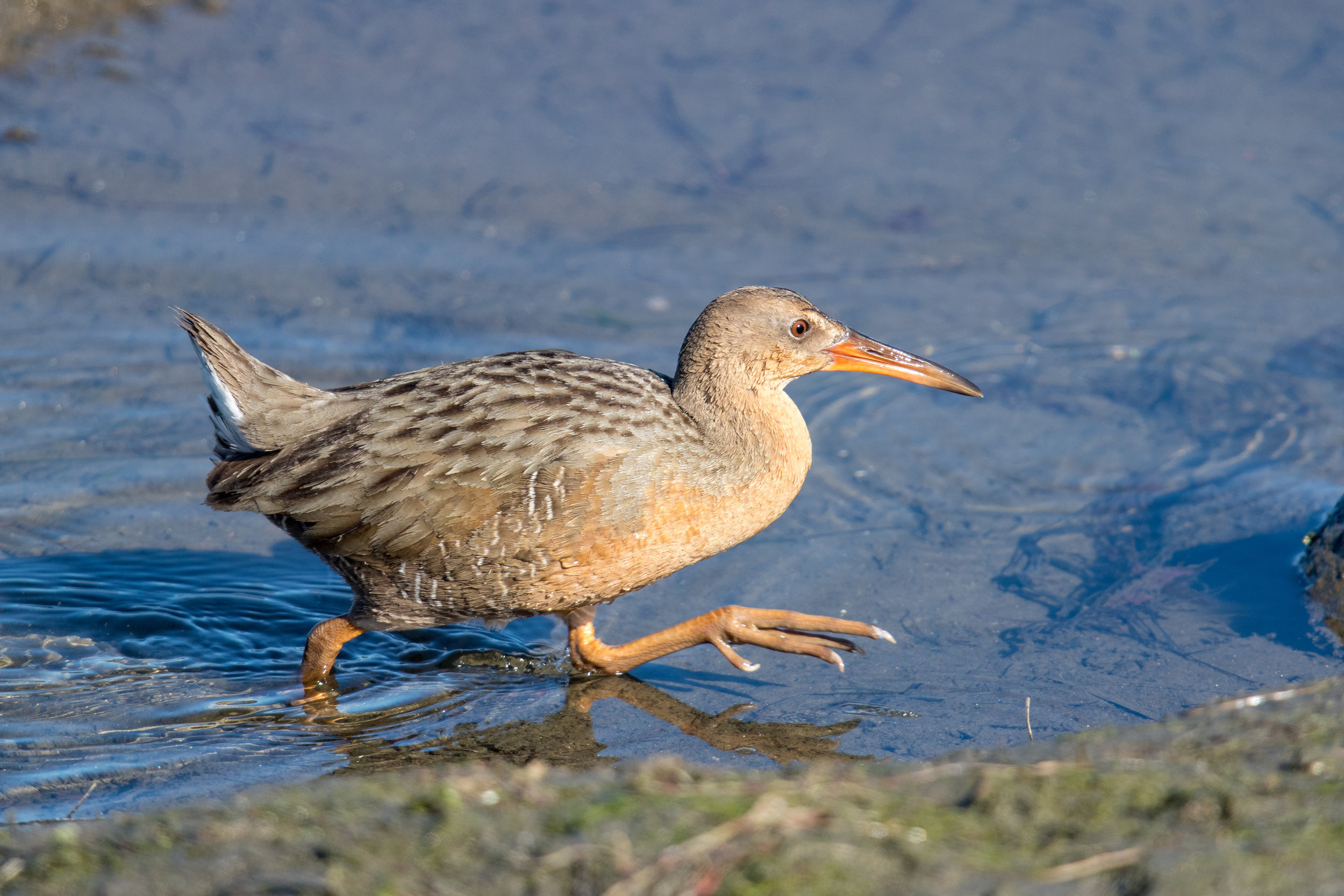The Brown Pelican is a conservation success story. Populations on both the Pacific and Atlantic/Gulf coasts suffered tremendously during the 1960s when all North American pelicans were extirpated outside of Florida.
Common Goldeneye
Greater White-fronted Goose
The Greater White-fronted Goose (GWFG) is about 28” long with a wingspan of 53” and a weight of 4.8 lb. (2200g). This about one-half the weight of the large common Canada Goose. The genus name Anser (AN-ser) is Latin for goose. The species name albifrons (AL-bih-frons) is from the Latin albus meaning white, and frons for forehead, hence, white-fronted for white front of face.
European Starling
Least Sandpiper
In the interior of North America the Least Sandpiper is the most common of the “peeps,” the small sandpipers in the genus Calidris. However, on the coast Least Sandpipers often associate with Western and Semipalmated Sandpipers and can be lost in their great numbers. Least Sandpipers generally travel in smaller flocks.
Northern Pygmy-Owl
The Northern Pygmy-Owl (NOPO) is about 6.75” long with a wingspan of 12” and weight is 2.5 oz (70g). The genus name, Glaucidium (glaw-SID-ih-um), is shared with the Ferruginous Pygmy-Owl and is Latin from the Greek glaux, diminutive of glaukidion, meaning a kind of owl, so-called from its glaring eyes.
Virigina Rail
Northern Shoveler
Snow Goose
Snow Bunting
Pectoral Sandpiper
The Pectoral Sandpiper is uncommon in Western Washington but can usually be seen during fall migration. Adults begin passing through Washington in late July and juveniles show up from mid-August to late October. The juveniles will be in new plumage having completed their prejuvenile (or first prebasic) molt, which results in the change from downy feathers to their basic plumage.
Burrowing Owl
Wild Turkey
Canvasback
The Canvasback stands out from the crowd. Its stately presence separates it from other ducks. It has been called “the aristocrat of ducks” (Mobray), and “elegant” (Alderfer). Its large size, sloping forehead and characteristic “dark at both ends and white in the middle” appearance (Bell and Kennedy) make it easy to pick out of a group of other ducks.
Fox Sparrow
The genus name Passerella (pass-er-EL-ah) is from Latin, passer, meaning a sparrow. The species name iliaca (eye-lih-AY-cah) is Latin relating to the marked flanks. The common name is from the reddish or tawny “fox” color of feathers. The Fox Sparrow (FOSP) is about 7” long with a wingspan of 10.5” and a weight of 1.1 oz. (32g). It is one of our largest sparrows.






















